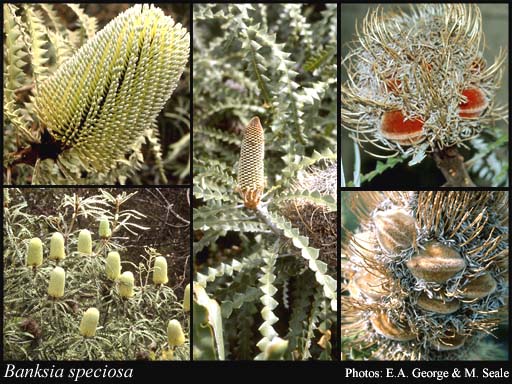- Reference
- Trans.Linn.Soc.London 10:210 (1810)
- Conservation Code
- Not threatened
- Naturalised Status
- Native to Western Australia
- Name Status
- Current
Non-lignotuberous shrub or tree, 1-6(-8) m high. Fl. yellow-green/cream, May to Jun or Aug to Dec or Jan. White, grey or yellow sand, laterite. Coastal sand dunes, sandplains.

Scientific Description
Trees or Shrubs, 1-6 m high; branchlets hairy. Leaves petiolate, alternate, 175-395 mm long, 15-30 mm wide, hairy; petiole 12-15 mm long; lamina flat, once divided, pinnately divided, shallowly divided or divided to the midrib, with 18-30 lobes on each side, the margins recurved or revolute. Inflorescences silky (with soft, shiny and appressed hairs), yellow, hairy. Perianth 40-48 mm long, hairy, all over, limb apex hirsute (with long, rough and coarse hairs), without awns; pistil 42-55 mm long, curved, style hairy. Follicles hairy, pilose, elliptic, 35-50 mm long. Flowers in January, May, June, July, August, September, October, November or December. Occurs in the South-west (SW) Botanical Province(s), in the Mallee (MAL) or Esperance Plains (ESP) IBRA subregion(s).
Distribution
- IBRA Regions
- Esperance Plains, Mallee.
- IBRA Subregions
- Eastern Mallee, Fitzgerald, Recherche.
- IMCRA Regions
- Eucla, WA South Coast.
- Local Government Areas (LGAs)
- Albany, Esperance, Ravensthorpe.